April 22, 2024
Designing a Sustainable Future With Giada Tamborrino of GT Studio
JOURNAL
As we celebrate Earth Day, there’s no better time to spotlight visionaries who are shaping the future of sustainable design in today’s world and market. Enter Giada Tamborrino, the innovative mind behind GT Studio. With her finger on the pulse of eco-conscious brand and packaging design, Giada’s journey from self-taught designer to the helm of her own studio is not just a story of creativity or entrepreneurship but also one of purpose. In this BTB interview, get ready to delve into Giada’s unique perspective on sustainability in business and the transformative power of purpose-driven design.
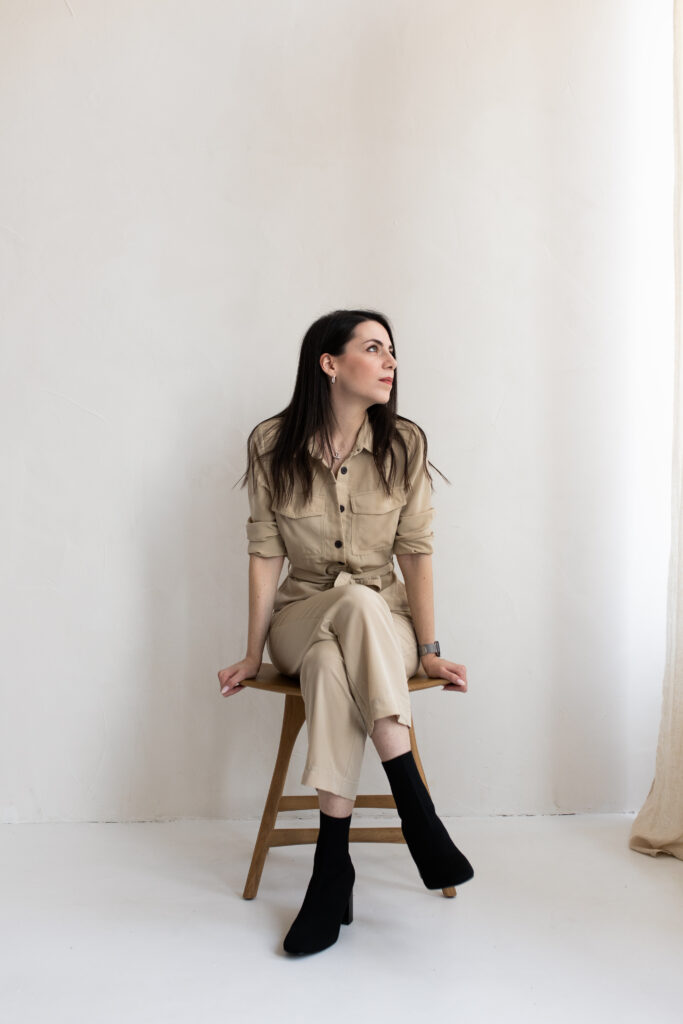
1. We’re so excited to chat with you. For those who don’t know, could you tell us a bit about who you are and what you do?
Thank you for having me, I’m honoured! I’m Giada Tamborrino, creative thinker and lead designer behind GT Studio, nestled in beautiful Amsterdam. My journey into the world of design is somewhat unconventional; I am largely self-taught, a path that has allowed me to explore and hone my craft in a deeply personal and intuitive way.
This journey has taken me from my early days in Italy, filled with curiosity and a natural inclination towards creativity, to establishing my own studio. GT Studio is my outlet for expressing my passion for minimalistic yet impactful design and eco-conscious packaging solutions.
“My work is a reflection of my belief that design can and should be a force for good, blending aesthetics with sustainability to make the world a better place, one design at a time.”
2. Can you share a bit about the origins of GT Studio? When did you get your start in the world of branding and design, and what ultimately led you to want to run your own studio?
My creative journey traces back to Reggio Emilia, Italy, my birthplace and a cradle of artistic influence, thanks to a family steeped in creativity.
From a young age, I gravitated towards visual storytelling over traditional forms of expression, finding joy in beautifying the world around me.
My earliest approach to digital design was at the age of six with my first computer, playing around with Corel Draw, reading tutorials, design books, and magazines long before YouTube became a learning haven.
My fascination extended to packaging, inspired by my father’s beauty salon. He would bring home an array of products, each offering a tactile and visual feast, from the textures and scents to the finishes and forms. Over time, design became my language, a way to express my personality, and my passion grew into a full-fledged career.
Post-high school, my career began to take shape through freelance projects, primarily for friends and family, alongside roles ranging from a digital print assistant to a t-shirt printer, and eventually, a graphic designer at a branding and web agency.
Seeking broader horizons, at 23, I ventured to London. This move marked a pivotal growth phase, enriched by encounters with remarkable creatives and opportunities to work with underground music labels, festivals, and clubs, alongside my design agency roles. It was here I discovered a profound desire to forge deeper connections with brands on my terms.
By the age of 25, driven by the dream to run my studio, I embraced entrepreneurship without a concrete plan—a decision that now, nearly a decade later, seems both naive and audacious. I initially used fictitious projects to showcase my capabilities, attracting real clients and establishing a steady workflow. My work gained recognition, featured on various design platforms, books, and blogs.
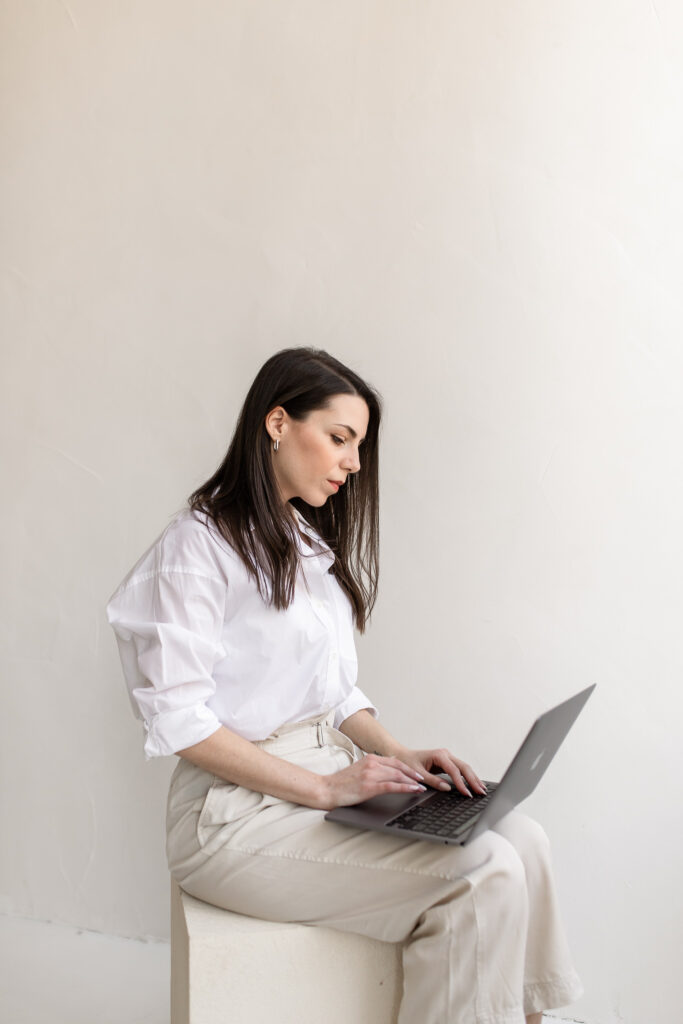
However, London’s relentless pace eventually led me to seek tranquility. I transitioned to Amsterdam, where GT Studio found its home. This allowed me to continue my creative exploration and commitment to bringing visions to life in a space that resonated with my values and lifestyle.
Over time, I structured my business to focus on branding and packaging experiences tailored to ethical brands. This specialization enabled me to delve deeper into sectors close to my heart, such as beauty & cosmetics, wellness, fashion, and lifestyle, where I could leverage my expertise to make a meaningful impact.
3. In honor of Earth Day quickly approaching and this month’s series focusing on sustainability and building a mission-driven business, we’re elated to have your perspective on this. To start, we’d love to hear your viewpoint on what sustainability in business means to you?
“To me, sustainability in business isn’t one-size-fits-all; it’s a nuanced approach that depends on each brand’s unique context. It’s about making ethical choices the norm rather than the exception, and constantly challenging ourselves to do better.”
What excites me most is the challenge it presents, pushing for creative and strategic solutions to embody ethical practices uniquely crafted for each brand.
While many factors can change, the foundation of sustainable business lies in authenticity and transparency. It’s about being clear on your impact, even if not perfect, the steps you’re taking to mitigate it, and inviting your audience to join you on this journey. This openness fosters trust and drives continuous improvement, showing that sustainability is not just a static goal but an ongoing commitment to balance environmental, social, and economic impacts.
4. We loveeee your tagline, “Making the world a better place, one design at a time.” Why is impact-driven / purpose-focused work important to you? Has this always been the case since GT Studio’s inception?
The mantra of “Making the world a better place, one design at a time” is at the heart of everything we do.
“This focus on impact-driven, purpose-focused work stems from the belief that thriving businesses and a healthy planet must coexist.”
The reality of climate change and its impacts are undeniable, and as a designer, I feel I hold the power and responsibility to contribute positively and inspire others to do the same.
However, this perspective evolved over time. The real shift occurred when I moved from the familiar settings of a small Italian town to the vibrant London. The differences in culture, habits, and the scale of consumerism and waste production in a large city were eye-opening. Witnessing the amount of trash and pollution produced daily prompted a profound realization about the role and impact of my work, especially in packaging design.
From that point on, I made a deliberate decision to pivot my business towards sustainability, diving deep into education and research. It became clear that by focusing on eco-conscious packaging, I could guide brands towards more responsible, environmentally friendly practices.
5. We know you focus on bringing brands to life by weaving their values and identity into a singular story. Why is this important for businesses today?
Regardless of a brand’s age and size, humans connect through stories and emotional resonance, making it crucial for a brand’s essence to shine through in every aspect—visuals, copywriting, imagery, packaging, materials, sounds, scents. Branding goes beyond logos or color palettes; it’s an immersive experience. And infusing your brand essence into your brand, and being unique to your values is the backbone of creating a lasting connection with your audience.
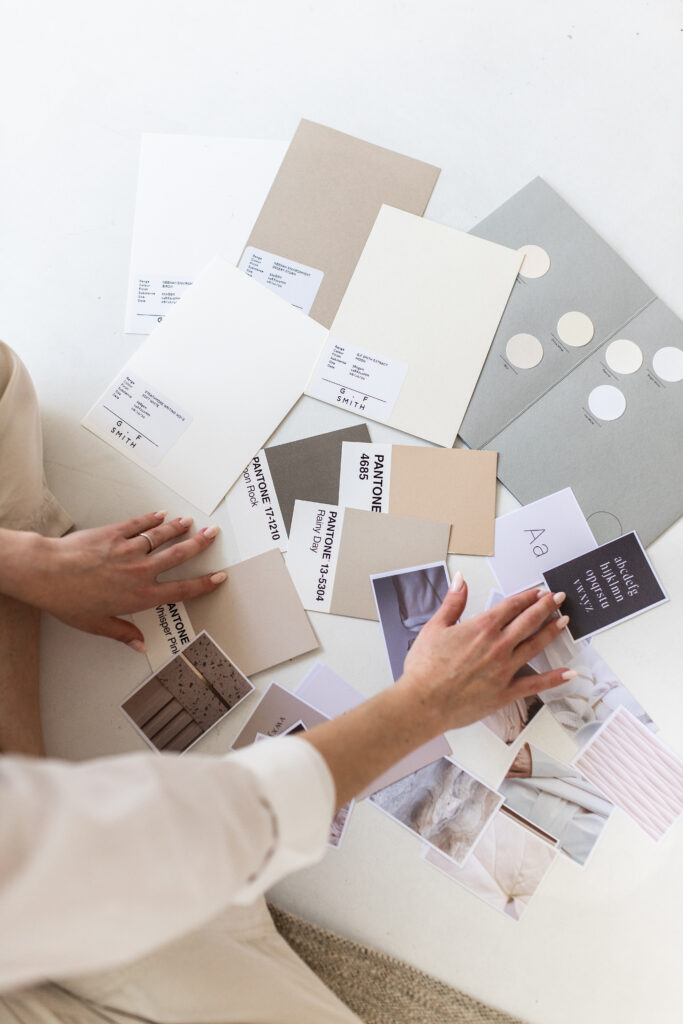
“In a world saturated with choices, those brands that resonate authentically on a human level are the ones that stand out and endure.”
6. We know eco-friendly packaging is one of your key differentiators (which is incredible!) when it comes to your services. Has this always been something you offered?
Initially, my focus was solely on branding, but as I expanded my services to include packaging design, I made a deliberate choice to offer exclusively eco-friendly options.
Targeting ethical brands naturally aligned with my push toward sustainability, and their enthusiasm further motivated my journey into sustainable design. I immersed myself in research on papers and materials, ensuring I could offer knowledgeable guidance from our very first project. Over time things have evolved so much, and today, the options of sustainable materials and innovations are truly exciting. I’ve always been passionate about challenging the misconception that sustainable packaging lacks creativity or appeal. On the contrary, eco-friendly materials often carry rich stories and can resonate with consumers on a deeper level, adding value to a product.
7. Continuing on the theme of eco-friendly packaging, what insights/learnings or trends have you been experiencing in the branding and packaging world?
The shift towards eco-conscious packaging has never been more in demand, driven by an increasing request from consumers and retailers. This surge is pushing brands towards eco-friendly solutions, which is amazing. However, it’s crucial to navigate this transition thoughtfully to avoid scenarios like greenwashing, which can mislead consumers and dilute genuine efforts toward sustainability.
Despite these challenges, there’s a silver lining–many brands are earnestly committing to sustainable practices, leading to remarkable innovations across various industries. In the beauty sector, at least amongst my clients, I’ve seen a growing trend towards waterless products and the use of upcycled ingredients, which not only minimize waste but also promote a circular economy. Similarly, refills and cradle-to-cradle systems are gaining popularity for their potential to significantly reduce waste and CO2 emissions.
In the fashion industry, I’ve observed a trend among my clients toward using textiles made from apple skin, mushrooms, and recycled materials.
Beyond these, there’s a growing use of packaging that can break down naturally, reducing landfill waste. This includes everything from alternative fibres to mushroom packaging.
Brands are also adopting a ‘less is more’ approach, using minimal, lighter materials and simpler designs. To reduce transportation emissions, brands are looking into localizing production and sourcing of packaging materials. Finally, companies are not just focusing on making packaging recyclable but are also establishing programs to ensure their packaging is actually recyclable like glass or aluminum, or better yet, reused.
It’s an exciting time to be involved in sustainable design as we witness and contribute to the evolution of branding and packaging towards greater environmental responsibility.
8. We all know how daunting it can feel to take the first step in establishing more sustainable business practices. What advice would you share with business owners who want to move in this direction but perhaps don’t know where to begin?
Embarking on the path to sustainability can indeed seem daunting, but the journey begins with reflective and strategic steps. Here are some foundational tips to get started:
Revisit Your Brand Strategy: Start with the core of your business and reflect on what your brand stands for. If inclusivity, diversity, and environmental respect aren’t currently at its core, consider how you can authentically integrate these values. This reevaluation is crucial for aligning your brand with sustainable practices.
Conduct a Sustainability Audit: Assess your brand’s strengths, weaknesses, opportunities, and threats in relation to sustainability. Investigate your supply chain: Where do your materials come from? How are your products made? This audit will help you pinpoint areas for improvement beyond the obvious steps of reducing waste and energy consumption.
Set Realistic Goals: Transitioning to sustainable practices is a marathon, not a sprint. Set attainable goals that match your current resources and capabilities. Remember, progress toward sustainability isn’t linear and varies from brand to brand.
Choose Your Partners Wisely: The companies you collaborate with—designers, copywriters, suppliers, and manufacturers—should share your commitment to sustainability. Conduct thorough vetting to ensure their practices align with your sustainability goals. From utilizing green energy to sourcing ethically.
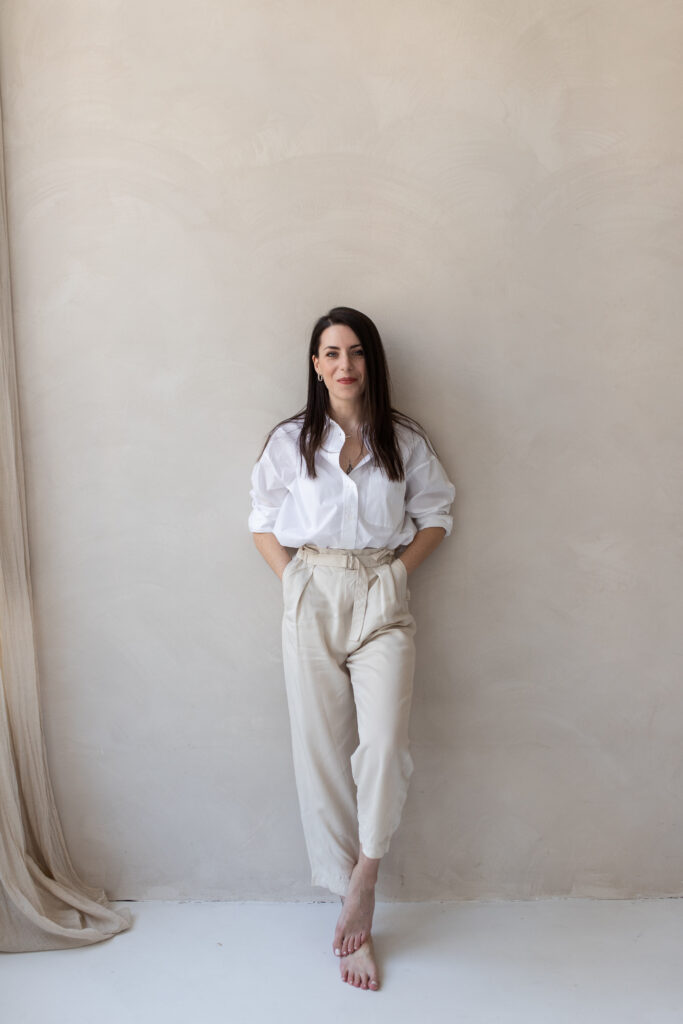
Starting with these steps can create a domino effect of positive change, setting the foundation for a genuinely sustainable business model. It’s about making thoughtful decisions that align with your brand’s values and contribute to a larger impact.
9. We know how isolating entrepreneurship and building a business can be; how have you found support or community in Amsterdam and beyond as you’ve built your studio?
In Amsterdam and during my time living abroad, coworking spaces have been invaluable to me. They not only provide a change of scenery but also an environment for meeting fellow entrepreneurs. Some of my closest friendships have been forged in these collaborative spaces.
Additionally, I cherish attending design events, especially those focused on paper and sustainable materials. These are opportunities for inspiration, allowing me to connect with like-minded individuals who share my passion and struggles.
Enrolling in different online courses in recent years has opened doors to connect with talented designers worldwide. Sharing lessons, tips, and experiences with peers from diverse backgrounds and cultures has been invaluable.
These interactions often evolve into connections, potential collaborations, and spark new ideas.
“It’s through these communities that I’ve found a sense of belonging in the broader creative industry. They remind me that, even as an entrepreneur, I’m part of a much larger, interconnected ecosystem of creatives striving to make a difference.”
10. We’re curious to know! Outside of the studio, what’s bringing you inspiration at the moment?
I’m forever inspired by nature and its natural cycles, from the changing seasons that mirror the rhythms of life to its beautiful imperfections and remarkable resilience. One quote that deeply resonates with me is, ‘Nature doesn’t worry, yet everything is accomplished.’
“It’s a reminder of the effortless grace and efficiency with which nature operates, serving as a guide in both my personal and professional life.”
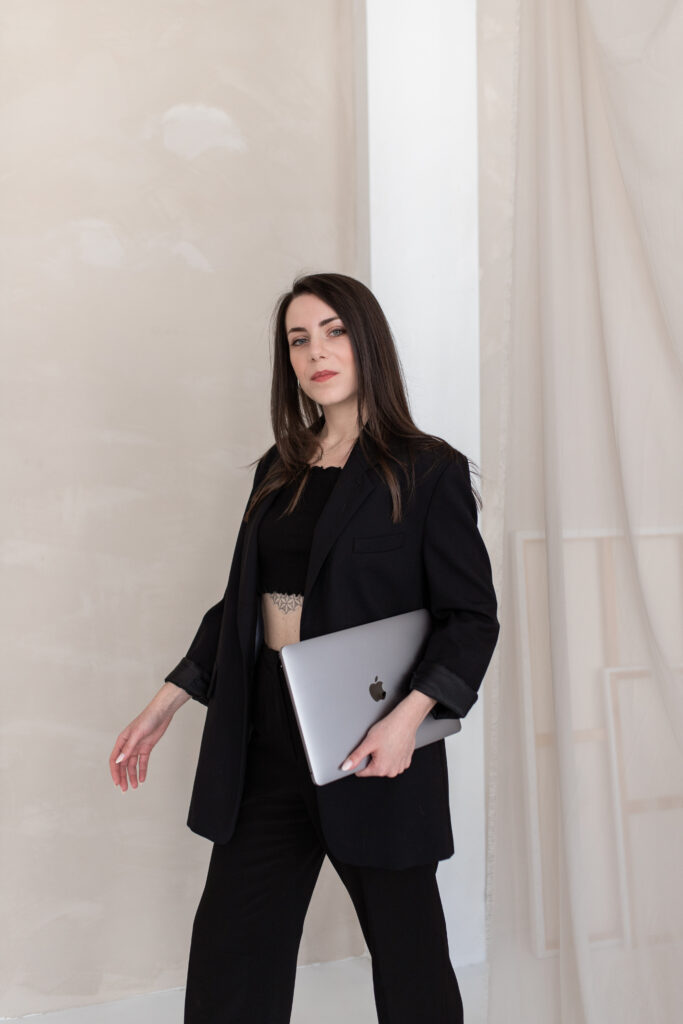
Beyond the natural world, the city of Amsterdam, with its dynamic energy and constant evolution, never ceases to inspire me. The city’s vibrant spirit and rich history offer a daily canvas of creativity and innovation. Additionally, my travels, especially a recent trip to Japan, have opened my eyes to new perspectives on design. The country’s dedication to exquisite design, minimalism, clean lines, and elegant experiences has enriched my appreciation for packaging and product design, influencing my work with a fresh infusion of ideas and aesthetics.
11. A little unrelated to branding and design 🙃, but do you have any favorite eco-friendly brands you can’t get enough of right now?
While I might be a tad biased, I genuinely adore the products from my clients’ skincare lines, such as RUA Beauty, LIV Botanics, Lilixir, Miseico, and A/N/G. Their dedication to sustainability and the quality of their products have made them staples in my beauty routine, and I proudly support and advocate for them.
Beyond my professional circle, I’m truly captivated by brands that push the boundaries. Local Dutch brands hold a special place in my heart, with Tony Chocolonely with their delicious ethically produced chocolate. O My Bag’s innovative use of apple leather in their bag designs showcases the incredible potential of alternative materials. Similarly, Kinfill’s beautiful home care products with refill options show how everyday choices can contribute to a more sustainable lifestyle.
Internationally, brands like Dame, Organic Basics, Haeckels, Seed, Wild, Last Object, Pangaia, and Patagonia, continue to inspire me with their commitment to eco-conscious, ethical, inclusive practices and products. Their innovative approaches and dedication to sustainability are not just admirable but also motivate me to explore and champion sustainable solutions in my own work and life.
12. What does GT Studio have coming down the pipeline this year? What should we be keeping an eye out for?
This year at GT Studio is shaping up to be one for the books as we prepare to launch several projects that have been brewing over the last couple of years. The nature of packaging design means that our creations often take time to manifest in the world, and we’re so looking forward to sharing these labors of love with everyone.
Our current project roster is brimming with inspiring work. We’re in the process of enhancing the packaging for a few brands, as well as crafting holistic branding and packaging solutions from the ground up. Our approach is selective, working with a limited number of clients annually to ensure each project receives the thoughtful, meticulous design it deserves.
Additionally, I’m excited to announce a new series on our blog where I’ll be interviewing our clients. These conversations will delve into the transformative power of design in their businesses, exploring their inspirations, how they navigate challenges, and celebrating their successes. This series aims not only to spotlight their incredible journeys but also to inspire and educate others about the positive impact of thoughtful business.
13. Is there anything else you’d like to add?
Thank you so much for this opportunity! ♥️
14. Lastly, let us know where our readers can find you and stay connected!
I’d love to connect! You can follow me on Instagram for a peek into my inspirations and works-in-progress @giadatamborrinostudio, or dive into my mood boards on Pinterest @giadatamborrinostudio for a burst of creativity and design ideas.
For a deeper look at my portfolio, to explore insightful articles on design and sustainability, or just to say hello, visit my website at www.gtstudio.co. I’m always open to discussions, collaborations, or any questions you might have, so feel free to drop me an email at hi@gtstudio.co .
Thank you so much to Giada for sharing your story which makes it clear that sustainability is so much more than just a buzzword—it’s a call to action and a way of life. It’s also a great reminder that the journey towards a greener, more equitable planet can begin with one small choice. Whether supporting ethical businesses or reevaluating your consumption habits; let’s heed Giada’s example and be catalysts for change, one design (or step) at a time.
Image credits:
To read more Beyond The Brand interviews, there are plenty more stories to browse through here.
Know someone who would be a good fit for this series? Please email us at hello@laerstudio.com.